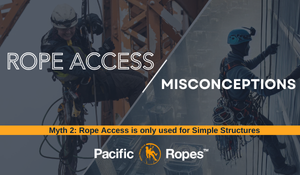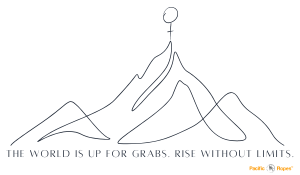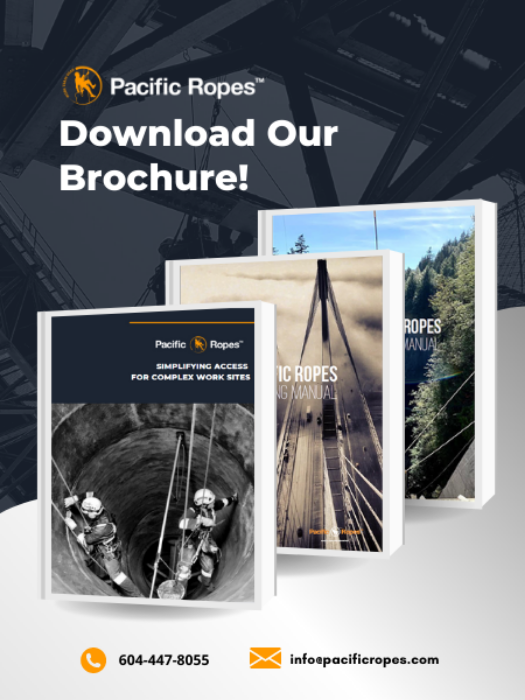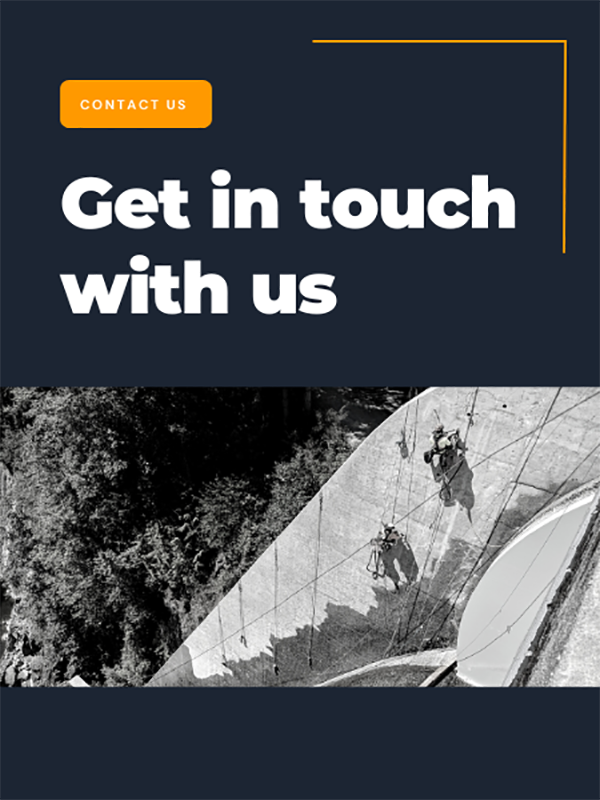Myth 1: Rope Access is Unsafe
The Reality: Lowest incidents rates for all work at height industries
Rope access technicians undergo rigorous training and certification processes, such as those outlined by IRATA (Industrial Rope Access Trade Association) and SPRAT (Society of Professional Rope Access Technicians). With a strong focus on risk assessment, redundancy systems, and continuous safety audits, rope access boasts one of the lowest incident rates compared to other methods of working at height. In fact, IRATA annually reports accident and incident statistics to continually better understand risks and develop stringent safety measures.
How Safe is this Industry?
Rope Access goes to lengths, to exceed and address concerns of risks, hazards, and safety. This is because of the perception of the greatest risk of all - working at height. Working at any height is inherently dangerous, so precautions are taken at every step to ensure that the training, system of accountability, supervisors, equipment inspections, and skill/industry development - are safe. Read below to see just how each aspect takes safety into account.
1) Rope Access method: Redundancy Systems
- 2-rope system (working and backup line) on 2 separate anchor points
- pre-planning stage includes: assessing hazards, anchor strengths, rope paths, rescue procedures
- 2 gear checks - self checks and buddy checks

Using a two-rope system—working and backup lines—combined with meticulous planning and redundancy, rope access ensures that technicians can navigate hard-to-reach areas with ease and confidence. From secure anchor systems and pre-planned rigging procedures to built-in rescue strategies, every aspect of the process is designed to prioritize safety.
This means businesses can rely on a method that minimizes risks and maximizes efficiency. With proper training and adherence to best practices, rope access consistently delivers results while maintaining the highest safety standards for both teams and clients.
2) Rope Access Program and Paperwork: Documentation at every step
For clients who may perceive rope access as unsafe, this structured documentation provides clear evidence that safety is not left to chance—it is systematically planned, reviewed, and enforced. The documentation and procedures followed by Pacific Ropes align with key safety measures in the rope access industry, ensuring compliance with industry best practices and regulations. Here’s how:
-
Structured Safety Framework (RAOP) – The Rope Access Operating Procedures (RAOP) serve as a comprehensive safety manual, ensuring that all operations adhere to strict protocols, much like an Occupational Health and Safety (OHS) program. This demonstrates a proactive commitment to worker safety.
-
Hazard Identification & Risk Mitigation (RAMS) – The Risk Assessment and Method Statement (RAMS) ensures that every worksite is carefully analyzed for potential hazards, and all necessary controls are put in place. This systematic approach minimizes risks before work even begins.
-
Emergency Preparedness (Work & Rescue Plan) – The Rope Access Work and Rescue Plan ensures that a clear, pre-planned rescue strategy is in place, covering anchor points, evacuation procedures, and emergency response. This reassures clients that workers are never left vulnerable in case of an incident.
-
Daily Hazard Monitoring (Field Level Risk Assessment) – With daily safety briefings and hazard updates, the Field Level Risk Assessment ensures ongoing vigilance. This dynamic approach helps adapt to changing work conditions, further reinforcing a strong safety culture.
Rope access is not only safe but often safer than traditional methods due to its meticulous planning and emphasis on control measures.
3) Rope Access Supervisors: Accountability and Operations
A Level 3 Rope Access Supervisor is the cornerstone of safety on any rope access project. With at least 2,000 hours of on-rope experience and rigorous training, these supervisors are entrusted with managing every aspect of safety and operations on-site. All proper rope access teams that follow IRATA guidance or are IRATA recognized companies, will always have an L3 supervisor on site.

A Level 3 Supervisor:
- ensures compliance with RAMS (Risk Assessment and Method Statements)
- leads daily safety meetings, and develop detailed rescue plans tailored to the worksite
- inspects equipment and anchors to overseeing work areas and monitoring technicians
- confirms that every team member is qualified for their role
- reviews logbooks
- ensures the right mix of Levels 1, 2, and 3 technicians
- in emergencies, executes rescue procedures and manages incidents efficiently
With their expertise in working at height and meticulous approach to safety, an L3 Supervisor provides clients and companies the confidence that every rope access job will be conducted with the highest level of professionalism and care.
4) Rope access equipment: Inspections
Technicians are trained to inspect every piece of their gear, from harnesses to anchor systems. These essential checks are necessary for their own safety for obvious reasons. They must follow established safety protocols, which ultimately creates a safer industry for everyone, from individual technicians to entire rope access teams.
Technicians must perform four types of inspections to ensure equipment stays in optimal condition:
-
Acceptance Check
When receiving new equipment, never assume it’s flawless straight out of the package. Perform a thorough inspection to identify any defects, record the serial numbers, and log the date of first use. This step establishes a foundation for tracking and maintaining gear. -
Pre-Use Check
Before every job, techs must conduct a visual and tactile check of equipment. Look for signs of wear, damage, or malfunction. This is the most often applied equipment check and defense against equipment failure. Can often be done as a “buddy check.” -
Detailed Inspection
Conducted by a qualified PPE inspector, detailed inspections involve an in-depth examination of gear. These are scheduled every six months (or 12 months, depending on the manufacturer) and must be documented. -
Interim Inspection
In high-stress environments—such as gritty worksites or after an incident—interim inspections assess whether equipment remains safe to use. Like detailed inspections, they should be performed by a PPE inspector and documented thoroughly.
5) Rope access training and personnel: Continuous Development
Rope access work is not just about harnesses and ropes—it’s about skill, experience, and stringent certification processes. Without proper training, no technician is allowed to professionally practice rope access. Both IRATA (Industrial Rope Access Trade Association) and SPRAT (Society of Professional Rope Access Technicians) have rigorous training systems to ensure every technician is fully prepared for the challenges of working at height.
What Makes Rope Access Training Unique?
The rigorous training process ensures that every technician is not only skilled in rope work but also proficient in:
- Moving laterally across complex structures
- Performing self and team rescues
- Completing job-specific tasks in various industrial applications
Checks and Balances in Certification
Both IRATA and SPRAT enforce strict regulations to maintain certification integrity:
- Expired Certifications: Technicians must renew certifications regularly
- Periods of Inactivity: If a technician hasn’t worked on rope for more than six months, they must complete a refresher course before resuming work
- Logbooks and Documentation: Every technician must document their experience and hours worked on rope, in logbooks. These logbooks are then assessed and are one of the key components of every recertification or upgrade training, by IRATA or SPRAT authorities who assess them.
The Reality Check:
The industry continually seeks to incorporate safety at every level, through training, accountability, and supervision. It is the very reason why it's the safest method of working at height. Here at Pacific Ropes, it starts with a sense of humble competence. It is by far, the greatest tool, to ensure safety. Whether you are the technician, business owner, supervisor, or client - asking questions and understanding the issues creates great lines of communication towards safer workplaces.
Wondering how you can identify challenges or utilize rope access work on site, whether you're a manager, contractor, or client? Don't hesitate and book a meeting with us!




